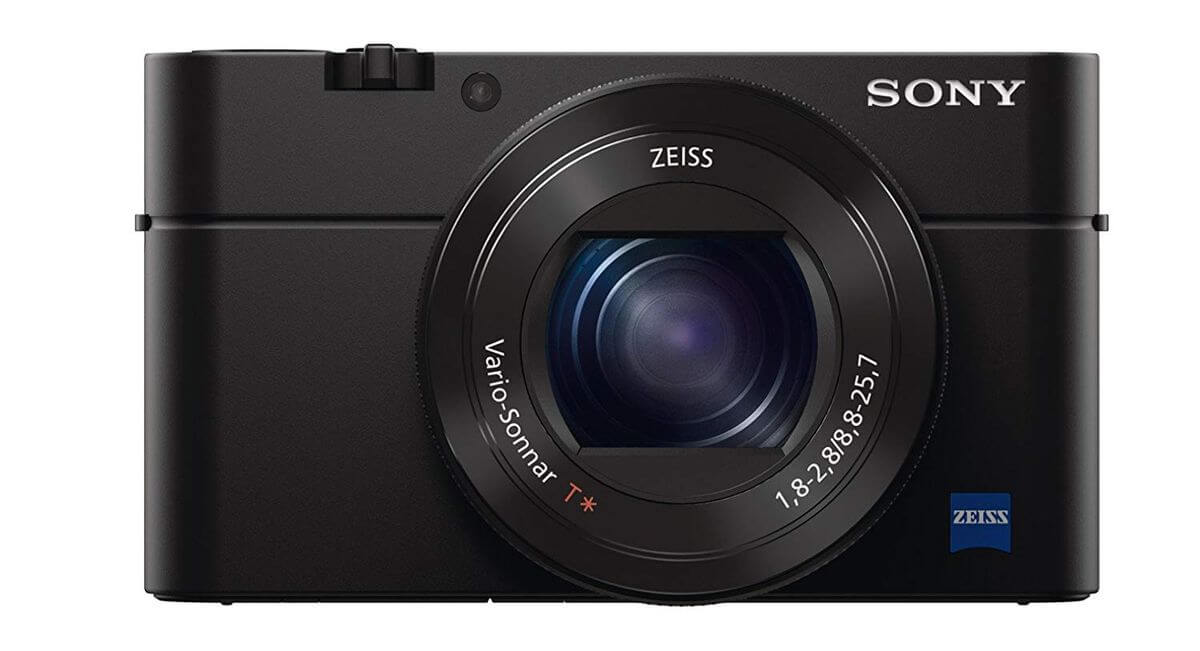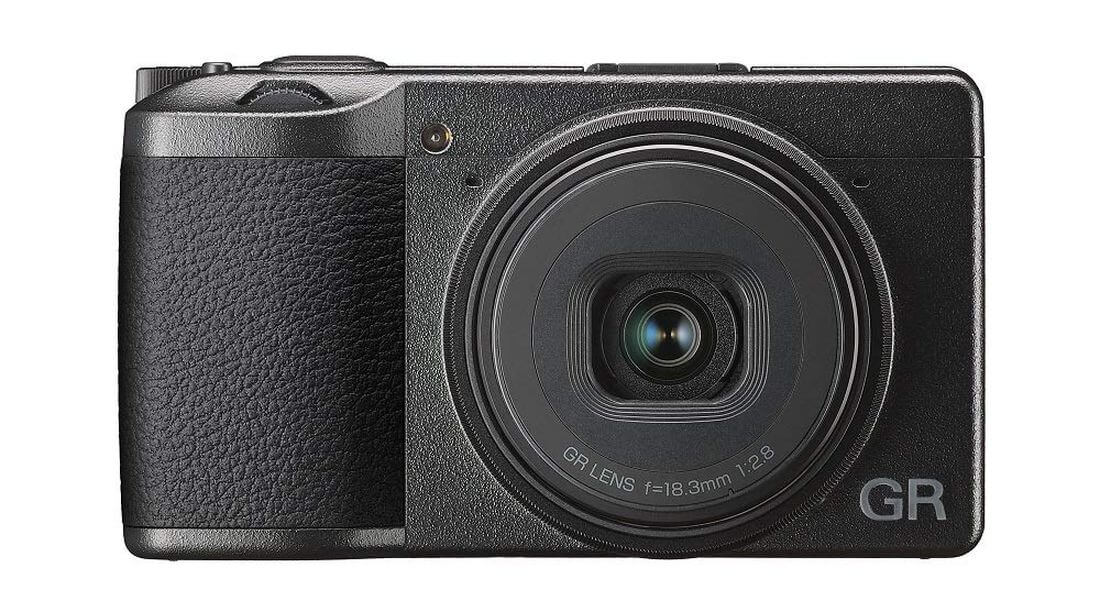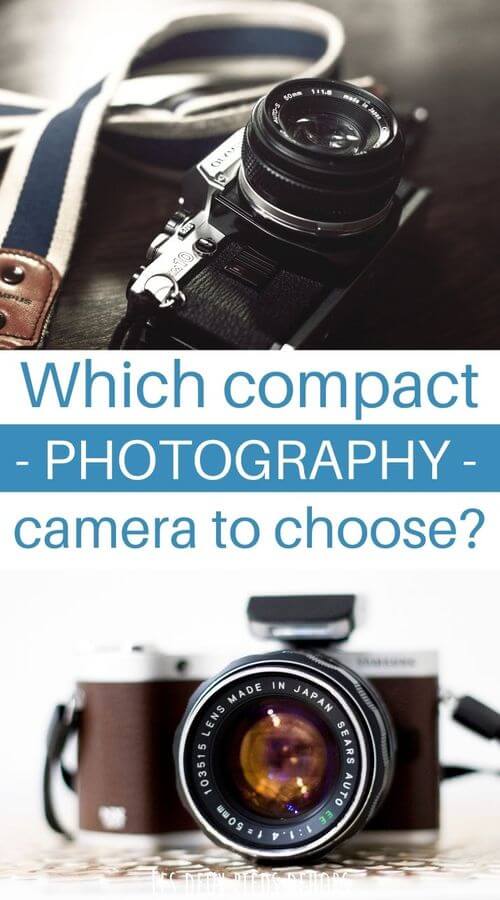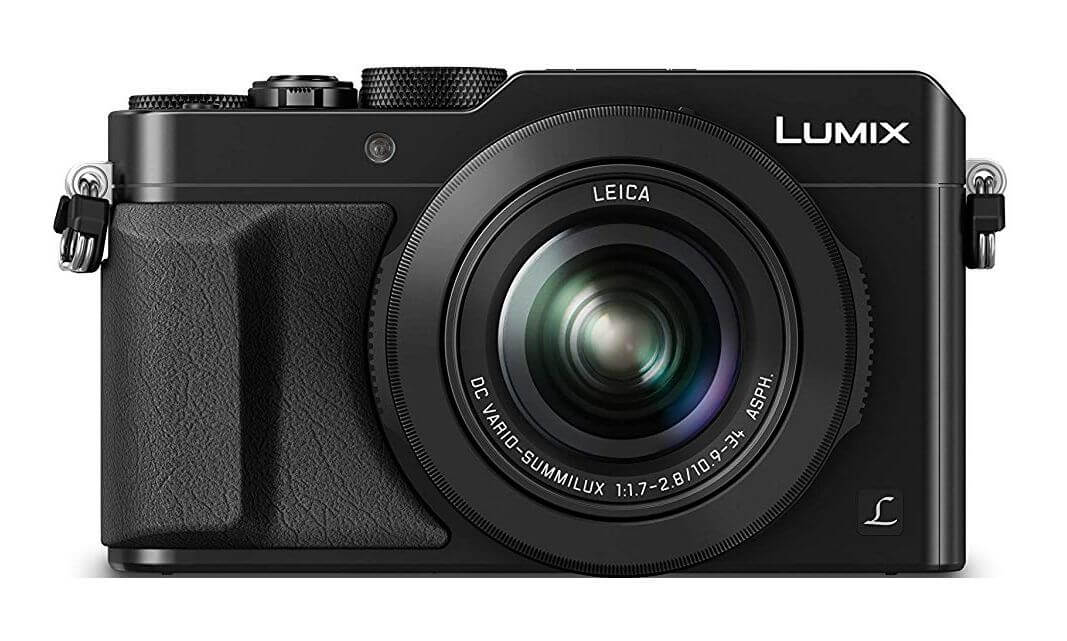Best point and shoot cameras: how to choose?
Last update: 04/19/2024
Our blog continues to grow thanks to you, our readers. This blog may contain affiliate links, which means we can earn a small commission if you make a purchase through them, at no extra cost to you. This helps us to continue to bring you more and support our work!
Over the last few years, digital photography has greatly evolved to the point that many people no longer know which camera to choose to capture their moments: with or without body stabilization, an LCD screen, Full HD, a swivel screen, the size of the sensor, how many Megapixels, in short, so many questions and so many choices. In this article, I talk about point and shoot cameras, also known as compact cameras. But you should know that there is a new article on the best current cameras, including of course expert compacts cameras of this article, but also mirrorless and bridges. We update this article every year to include the latest recommendations.
Basic point and shoot cameras have recently been relegated to the status of photo pariahs, so much so that the competition from smartphones has been intense, with most people now having a camera integrated directly into their phone (and that’s enough to keep them happy to take great pictures), many no longer need a dedicated camera. Of course, the handhold is far from ideal, the burst mode is limited, low-light photography is still a pain but hey… Especially since manufacturers are competing with each other in terms of imagination and software features to improve quality and performance. Some even go as far as inventing programs to simulate the rendering of more advanced cameras on these smartphones.
As a result, these poor “point and shoot cameras” that have always been designed to simplify shooting without artifice and without the necessary user control, no longer offer enough. This may seem like a bit of an overstatement: on the one hand, people prefer their smartphone because it’s a “ready to shoot” camera, but on the other hand, these devices are the ones that have evolved the most and have the most features that require knowledge and control!
In this article, I’ll give you my opinion on the latest advantages of point and shoot cameras and tell you about the new advanced compact cameras: what they’re for, who they’re for, how to choose them and give you my current recommendations. The best advanced point and shoot camera of the moment you’re wondering?
If you are still hesitating on which camera to choose to take pictures, I invite you to read my full article on mirrorless cameras.
The latest advantages of compact cameras?
These cameras keep certain advantages. The most basic ones are available at very low prices, much more affordable than high-end smartphones, while also being compact, space-saving and often even lighter. They also incorporate a sensor of the same size as smartphones, so they are generally just as powerful, with optical zooms that are obviously more efficient and of higher quality than digital zooms, allowing them to be more versatile.
The most expensive cameras must however justify their prices with specific functions, such as waterproofing, some manufacturers are releasing devices offering a different approach such as Snapshots allowing you to have a printed copy of the photo as soon as the shot is taken, etc.
It must however be recognized that this type of camera is tending to disappear, being pushed to the back door by smartphones and advantageously replaced by more advanced point-and-shoot cameras, sometimes called “experts”. These are currently the most relevant compact cameras for those who want to have something better than smartphones and giving them the possibility to evolve in their photography practice with devices that remain relatively light and discreet.
The advanced compact camera, a special category
What is an advanced point-and-shoot camera?
Ils regroupent tous les compacts dont l’objectif ne peut donc être changé (on parle sinon d’appareils avec objectifs interchangeables), et qui possèdent un capteur d’une taille de 1” ou plus grand. On trouvera donc des références avec capteur mFT (Micro 4/3 – Micro Four third), APS-C et même plein format (Full Frame) comme le Sony RX1. Les marques qui proposent le plus large choix dans cette catégorie sont Sony, Panasonic et Canon. D’autres marquent s’y sont aussi mis comme Fujifilm, Ricoh ou Leica. Ces appareils sont très intéressants non seulement pour leurs capteurs de plus grandes tailles que les compacts de base, mais surtout pour les fonctions qu’ils proposent avec un accès aux paramètres de réglages aussi avancés que sur les hybrides ou les appareils photo reflex (contrôle d’ouverture et de temps de pose, format RAW…), beaucoup disposant même d’un viseur électronique.

Here’s one of the best expert compact cameras of the moment, the Sony RX100 IV, still at an affordable price – See on Amazon
Advanced compact cameras, for who and for what?
The term “advanced” suggests that these devices are intended for experienced users who are already familiar with the technology and are just looking for a backup camera, but this is not really the case. Remember that whoever is “beginner”, “expert” or “pro” is the person holding the camera. In my opinion, advanced compact cameras are even among the most suitable cameras to start out in photography. They are advanced enough to allow you to learn and improve your photography skills while remaining relatively easy to use and limited enough in their evolution so that you don’t have to worry about anything other than learning how to use them. You won’t be tempted to buy a wide range of lenses as long as you don’t need them, economical right?
Many beginners start with a mirrorless camera or DSLR and its kit zoom, 12-32mm f/3.5-5.6 in Panasonic mFT or 18-55mm f/3.5-5.6 in Canon APS-C, for example. Advanced point-and-shoot cameras usually have the same kind of focal lengths, often with better apertures, all in a more compact all-in-one body with a fairly similar quality. So overall, unless you already know what you need and know that you will invest more time and money in your passion for photography, advanced compact cameras will be ideal companions.
Of course, experienced users who are looking for a backup camera for their large mirrorless camera/DSLR camera line-up may also consider advanced compacts as allies of choice. Some may also argue that the mirrorless cameras/DSLR kit offers also include 45-150mm or 70-300mm f/4-5.6 telephoto lenses, focal lengths that few advanced compacts will cover, and this is where another category that I would normally advise against can be an asset, that of advanced bridge cameras (roughly the equivalent of an advanced compact with a large zoom lens, although there are far fewer of them and only offer 1″ sensors, often at rather high prices).

A very nice reference from Ricoh, the Ricoh GR III, a superb expert compact – See in detail on Amazon

Here is an example of an expert compact from the renowned Canon brand, the Canon G7X Mk III – See in detail on Amazon
Advantages and disadvantages of advanced compact cameras
Compactness
The first advantage of these cameras is of course, as their name indicates, that they are compact. The manufacturers have therefore focused, even if it means sacrificing a few comforts, on their dimensions and weight, which make these devices very practical to carry around in a pocket or a small bag. This compactness also gives them another advantage: they are discreet.
Let's get out of AUTO mode!
A feature that sets them apart from their “amateur” ancestors, they have functions that allow you to exit automatic mode and have access to a choice of aperture control, exposure time, ISO sensitivity or even all three at the same time. Their sensors of larger size than the basic compact cameras allow you to appreciate the effect of aperture control on the depth of field (you can refer to my article on the subject if you’re not familiar with the term), for example, which is not always the case with cameras with very small sensors. They also have many other advanced options, especially the use of RAW format, which will allow you to familiarize yourself with advanced image-processing methods thanks to powerful softwares that will further improve their quality.
They last, but...
Another advantage of these discreet but effective cameras is that they don’t usually replace advanced cameras such as mirrorless camera and DSLRs, so you may tend to want to keep them as a backup camera even if you buy a mirrorless camera or DSLR later on. Whereas when you start out with an entry-level mirrorless camera/DSLR camera, the day you change it, it will usually not be of use to you anymore. In fact, chances are that if you want a lighter, more basic camera, you’ll turn to those same advanced point-and-shoot cameras.
Nevertheless, if they don’t replace advanced cameras, it’s precisely because they themselves evolve very little, the slightest evolution requires a complete renewal of the camera and these changes are not always the ones you are looking for, whereas with mirrorless or DSLRs the possibilities to evolve are numerous and already existing.
But with experience, you will find that in many situations, an advanced compact camera with a bright standard zoom and a relatively large sensor can still come in handy.
The importance of sensor sizes and their consequences
Which sensor sizes to choose for its compactness?
The most successful advanced compact cameras are those with 1″ sensors, initiated by Sony with the RX100. Since then, other brands, including Canon with for example the G7X and Panasonic with, among others, the TZ100, have entered the industry. However, all these 1″ sensors come from Sony factories, so you can have the same potential on the image quality with all these devices. The differences will therefore lie more in the quality of the lenses and the predefined treatments for JPEG (read the article on RAW/JPEG) as well as on the various advanced functions offered on the camera (electronic viewfinder, 4K video, etc.).

There are also full-frame expert compacts like the Sony RX1, amazing cameras at mind-blowing prices! – More details on Amazon
There are, however, compact cameras with larger sensors, ranging from mFT with Panasonic’s LX100s to full frame with Sony’s RX1s. Fujifilm has chosen to offer the highly acclaimed compact cameras with an APS-C sensor with a fixed focal length equivalent to a 35mm f/2, the X100 series, which is particularly popular for street photography. Ricoh with the GR and Nikon with the Coolpix A as well, although this one hasn’t been renewed for a long time, and Canon which recently chose with its G1XIII to offer an APS-C compact camera, the only one with a zoom and not a fixed focal length. Leica has been offering APS-C and full frame compact cameras for a long time, but these are reserved for a certain elite given their prices.
It's hard to be a point-and-shoot camera!
To be able to produce compact cameras with large sensors, concessions had to be made in the design of the optics. The TZ100, for example, offers an extremely wide focal length range but its 1″ sensor could not maintain a constant f/2.8 aperture over the whole range, so we had to settle for a f/5.9 aperture at full zoom. That’s why most brands that have decided to design compact cameras with APS-C or FF sensors have limited themselves to a fixed focal length, with the exception of Canon and its G1XIII, which chose to zoom in with a focal length range reduced to a 24-70mm equivalent, with an even smaller maximum aperture of f/5.6 at full zoom.
So that these lenses are not too prominent, they also had to use relatively simple designs (zoom that extends, fixed focal length not too bright and consisting of few lenses…) that don’t always allow them to match the performance of lenses dedicated to mirrorless cameras and DSLRs. The 23mm f/2 lens found on the Fuji X100, for example, is still considered less good, especially at full aperture, than its mirrorless camera counterpart Fujinon XF 23mm f/2 WR.
The best compact cameras of the moment, my recommendations!
The basic point-and-shoot cameras
As mentioned in the first paragraph, basic compact cameras are no longer very relevant choices today, except for those that offer exclusive features or really attractive prices. Examples include the Olympus Tough TG-6 at around €500, a rugged all-rounder designed to withstand anything in all conditions that can even be submerged up to 15m without a waterproof body, or the simple and relatively affordable Canon Ixus 285 for less than €200, no heavier or bigger than a smartphone. Other compact cameras offer a very wide focal length range like the Sony DSC-HX99 or the Panasonic TZ80 between €200 and €400, but if that’s really a key feature for you, a bridge can go further and some will even have a range almost as wide with a 1″ sensor, like the Panasonic FZ1000 or the Sony RX10 and offer advanced features similar to the advanced compact cameras that will allow you to learn photography techniques.

I also personally own a point and shoot camera of this type, water/dust/shock resistant, the Olympus TG-6 – More details on Amazon
Advanced compact cameras
These are the devices that I think will allow “basic” cameras to keep their undeniable advantages over smartphones. They are designed for photography, therefore have ergonomics designed for photography, with larger sensors and more ambitious lenses. Of course, to guarantee a certain compactness, compromises are made on the focal length range they cover, even if some, like the Panasonic TZ200, manage to zoom up to a focal length equivalent to 360 mm at the price of limited maximum apertures (f/6.4 at full zoom, which even with a 1″ sensor is already too small to provide optimal image quality). I would therefore advise you to limit yourself to compact cameras available at around €500 offering a reduced focal length range with larger apertures like the Sony RX100. As the latest versions are very expensive, Sony had the good idea to continue producing the older versions whose prices have dropped, so you will be able to see the RX100 III or IV versions. For the other brands, I particularly recommend the Canon G7X III and G5X II or the Panasonic LX15. If you have a more limited budget, you can still look at the Canon G9 X Mk II (but which has a much less bright lens than the G7X II for example).
If you are interested in a larger sensor, which will allow you to take better quality images in low light and have blurrier backgrounds, Panasonic also offers the LX100 II with a Micro 4/3 and 24-75mm f/1.7-2.8 equivalent zoom. With even larger APS-C sensors, Fujifilm has developed a range of renowned sensors popular in street photography (currently seen in some commercials that are not Fujifilm commercials), the X100s that are limited to a fixed focal length (28 or 35mm equivalent) and the Ricoh GRII. Canon has decided to release its compact cameras with APS-C sensor as well, the G1X III, whose particularity is, as previously mentioned, a 24-70mm f/2.8-5.6 equivalent zoom. Note that we are talking about compact cameras that can reach and even exceed 1000 €.
Here below, a summary of the advanced compact cameras I particularly recommend, as well as their main characteristics. You can sort the table according to the criteria you want!
| Brand | Model | Sensor size | Focal lenght (Equivalent FF) | Max. aperture | Resolution (MP) | Weight (g) | Amazon |
|---|---|---|---|---|---|---|---|
| Sony | RX 100 MK II | 1" | 28-100mm | f/1.8-2.8 | 20,1 | 281 | Amazon |
| Sony | RX 100 MK III | 1" | 24-70mm | f/1.8-2.8 | 20,1 | 287 | Amazon |
| Sony | RX 100 MK IV | 1" | 24-70mm | f/1.8-2.8 | 20,1 | 295 | Amazon |
| Sony | RX 100 MK V | 1" | 24-70mm | f/1.8-2.8 | 20,1 | 300 | Amazon |
| Sony | RX 100 MK VI | 1" | 24-200mm | f/2.8-4.5 | 20,1 | 274 | Amazon |
| Sony | RX 100 MK VII | 1" | 24-200mm | f/2.8-4.5 | 20,1 | 302 | Amazon |
| Panasonic | Lumix LX100 | MFT | 24-75mm | f/1.7-2.8 | 12,8 | 351 | Amazon |
| Panasonic | Lumix LX100 II | MFT | 24-75mm | f/1.7-2.8 | 17 | 392 | Amazon |
| Canon | G9X MK II | 1" | 28-84mm | f/2-4.9 | 20,2 | 206 | Amazon |
| Canon | G7X MK II | 1" | 24-100mm | f/1.8-2.8 | 20,2 | 279 | Amazon |
| Canon | G7X MK III | 1" | 24-100mm | f/1.8-2.8 | 20,1 | 304 | Amazon |
| Canon | G5X MK II | 1" | 24-120mm | f/1.8-2.8 | 20,1 | 340 | Amazon |
| Canon | G1X MK III | APS-C | 24-72mm | f/2.8-5.6 | 24,2 | 399 | Amazon |
| Ricoh | GR II | APS-C | 28mm | f/2.8 | 16,2 | 221 | Amazon |
| Ricoh | GR III | APS-C | 28mm | f/2.8 | 24,3 | 257 | Amazon |
| Panasonic | LX15 / LX10 | 1" | 26-78mm | f/1.4-2.8 | 20,1 | 310 | Amazon |
| Panasonic | TZ100 / ZS100 | 1" | 25-250mm | f/2.8-5.9 | 20,1 | 310 | Amazon |
| Panasonic | TZ200 / ZS200 | 1" | 24-360mm | f/3.3-6.4 | 20,1 | 340 | Amazon |
| Fujifilm | X100F | APS-C | 35mm | f/2 | 24,3 | 469 | Amazon |
| Leica | Q2 | Full Frame | 28mm | f/1.7 | 47,3 | 652 | Amazon |
Finally, Sony’s RX1s feature full frame sensor and you can imagine that while Fuji and Ricoh have chosen to limit themselves to a fixed focal length in order to remain compact, the same goes for a compact camera with an even larger sensor. They therefore also have a focal length equivalent to 35mm. Leica has also released a compact camera with a full frame sensor, but we are reaching new heights in terms of price, as it is over 3000 €… They say it’s the best advanced compact camera, the Q2.
This article on choosing a compact camera is coming to an end. The competition from smartphones, which was tough for basic compact cameras, has led manufacturers to innovate to finally offer cameras dedicated to photography, compact but whose quality had to take a leap forward to remain competitive. Let’s not forget that barely 10 years ago, apart from APS-C and full frame sensor DSLRs, the choice was limited to these compact cameras with very small sensors, no viewfinder, no creative mode, no advanced functions…
Today, we photo enthusiasts can have a variety of more powerful and more complete cameras at various prices. DSLRs with plastic kit zooms are no longer the only solutions to equip yourself with quality equipment for a relatively reasonable price, and that’s good. Especially since for most uses, this type of camera will do very well.
I hope this article will help you in choosing your future compact camera. What do you personally think of advanced compact cameras? Do you like them? Would you rather stick with a DSLR? A mirrorless camera? To go further in reading, here is my article on choosing a camera for travel.
See you soon for a new article,

Written by Sylvain PONS
I've been passionate about photography since 2010, learning as I went along. Today, I dedicate myself to guiding others in their choice of camera gear and sharing a variety of tips to improve their photography skills.
Despite our care, a mistake may have slipped into this article. If you find any, please don't hesitate to let us know so we can correct it as soon as possible and keep our information up-to-date!












